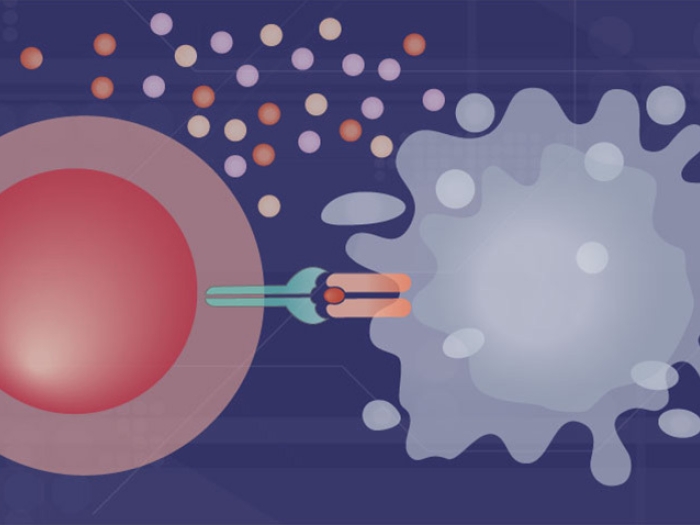U-M researchers lead the field in successful protein creation, a tactic that could lead to a newer, more effective class of drugs.
2:18 PM
Author |

Using the power of computer science, physics and biology, scientists are attempting to mimic what took millions of years of evolution to refine: the creation of new proteins.
The human body contains at least tens of thousands of different proteins, which act as workhorses driving many of the functions that make life possible. Creating a protein from scratch opens up new worlds of possibility for the treatment of disease. But how is this done?
Yang Zhang, Ph.D., professor of Computational Medicine and Bioinformatics and Biological Chemistry, and his lab at U-M have been on the forefront of protein design and protein folding. In a new paper in the Journal of Molecular Biology, Zhang and his team, including lead author David Shultis, Ph.D., detail how they successfully created a protein involved in apoptosis, or programmed cell death. Apoptosis is critical for normal development and the removal of damaged cells — it is the failure of this program that can lead to cancer.
LISTEN UP: Add the new Michigan Medicine News Break to your Alexa-enabled device, or subscribe to our daily audio updates on iTunes, Google Play and Stitcher.
Know the fold
Before you can create a protein from scratch, it is important to understand how it is folded.
"Determining how a protein is folded has taken a very long time," says Zhang. "But understanding how a protein folds is very helpful for designing a new protein using a computer. Protein design can be considered a reverse of protein folding, which should be governed by the same general principles."
Protein sequences can vary in size from tens to thousands of amino acids. But this chain must correctly fold into a unique three-dimensional structure to work. Predicting how a protein will fold from its sequence has developed into a kind of Olympic sport for scientists.
I've learned from our experience with protein folding that evolution can tell us a lot.Yang Zhang, Ph.D.
In fact, in a prestigious competition, called CASP, held every two years, amino acid sequences with an unknown structure are sent to labs worldwide — the winner is the group whose predicted model comes closest to the correct structure determined experimentally. Zhang's lab has been at the top position in every competition since 2006 — before being bested in 2018 by the immense computing capability of Google.
Improving on nature
What sets Zhang's lab apart — and what makes their protein design work so successful — is their unique approach. Their team's design starts with something called a force field, which describes how atoms interact inside the protein (protein folding is driven by the physical interaction of atoms). However, they couple this force field design with the wisdom provided by evolution, through the generation of a sequence profile collected from other proteins with a similar evolutionary origin.
"I've learned from our experience with protein folding that evolution can tell us a lot. Nature's proteins are created from millions of years of evolution, and we can look for proteins from similar families that can fold similarly," says Zhang. Doing so avoids spending an enormous amount of computational time randomly searching amino acid sequences for functional proteins.
MORE FROM MICHIGAN: Sign up for our weekly newsletter
Zhang's team focused on apoptosis because of its therapeutic potential. For this new study, they honed in on a protein called XIAP, which interferes with the process of apoptosis through the binding interaction with another protein, caspase-9., whose activation initiates cell death.
But the activity of XIAP can be inhibited by a different protein called Smac, which interferes with the interaction of caspase-9 and XIAP. The team successfully designed a new and improved XIAP that bonded to Smac more readily than the protein found in nature, effectively blocking apoptosis.
"This is a demonstration of the power of computer-based design," Zhang says. "With this power, it brings out the possibility for the next generation of protein-based drug discovery. It will be very exciting to see one day that computationally-designed proteins are used as drugs to regulate apoptosis and treat cancer."

Explore a variety of health care news & stories by visiting the Health Lab home page for more articles.

Department of Communication at Michigan Medicine
Want top health & research news weekly? Sign up for Health Lab’s newsletters today!





